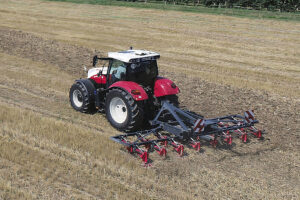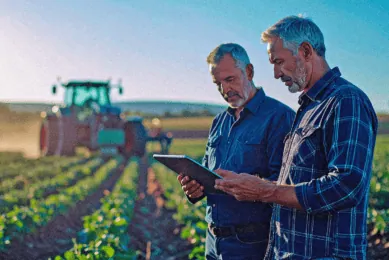New implement for stubble and soil cultivation

Researchers of the University of Applied Sciences in Cologne, Germany, are working on a new type of implement for stubble and soil cultivation. With this new tool, crop residues – such as grain, rapeseed and maize stubble – can be further reduced by ultra-flat tillage.
For the development of the implement, the Institute for Construction and Agricultural Machinery Technology of the University and the companies Seed2soil and Saphir Maschinenbau are working together within the so-called Grinder project.
The aim of the project is to accelerate straw rot and to encourage as many (weed) seeds to germinate as possible. In further passes, the germinating plants are then destroyed or pulled from the soil and deposited on the surface, where they then dry out. This way they are no longer a competition for the follow-on crop. In addition, the risk of infectious diseases and pests also decreases.
Existing stubble and soil tillage systems currently combine several different implements. They are usually large and heavy and demand a lot of power from a tractor. The newly developed Grinder implement system is equipped with multifunctional tools, which can also cut and shred at the same time.
Field tests

According to the developers, the Grinder is significantly lighter and smaller and requires less power from the tractor. With current machines for tillage, reduced plant remains are worked into the soil approximately 5 to 7 cm.
This is often too deep for small organisms to reach. They therefore cannot process it in time. Worms, for example, make a major contribution to aeration of the soil and to the conversion of organic matter.
Moreover, especially the light germinators – which many weeds are – fall into so-called dormancy if they are incorporated too deeply. With a light germinate, the seed germinates only under the influence of light. Some of these seeds need a thousandth of a second of light to start the germination process.
In field tests, the Institute’s team has already compared the Grinder implement with devices such as cultivators, compact disc harrows and straw harrows, which are usually used for stubble and soil cultivation. The tests showed that the implement can work the seeds and harvest residues left on the field after the harvest much more shallowly into the soil than conventional devices.
Perfecting the implement
“We have already been able to achieve the desired maximum working depth”, says Phillip Müller, Research Associate at the Institute. “Due to its easy-to-pull design, the Grinder also works more efficiently than conventional devices, which is reflected in lower fuel consumption.”
The research team will now work on further perfecting the implement. It will mainly focus on reaching a maximum working depth of 2 cm over the full width of the implement. That is an important challenge for the team, because if it is not possible to work over the full implement width, places or stripes with a lot of weed formation are created where the weeds have disappeared.
The importance of improvements in agricultural machinery technology like the Grinder is growing. Using equipment for stubble and tillage can help to reduce the use of pesticides in agriculture. “Crop protection products are used in agriculture to control weeds, plant diseases or pests”, explains Prof. Dr. Wolfgang Kath-Petersen from the Institute. “However, chemical agents can pollute the environment and organisms. In addition, resistance is increasing and approval is becoming more and more difficult.”



